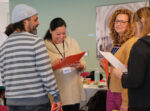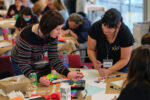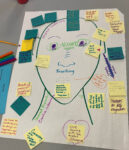Following her special virtual visit with Hoopa Valley Elementary last school year, United States Poet Laureate Joy Harjo worked with poet and retired Hoopa Valley teacher Stephanie Silvia to design a poetry contest inspired by Wallace Stevens’s poem “Thirteen Ways of Looking at a Blackbird.” Following are the winning student poems and honorable mentions.
First Place Winners
Six Ways of Listening to a Drum
Johnny Erickson, Third Grade
1.
I listen to drumming-
when my Dad and the men
play Indian cards.
2.
The sound of the drum
makes me feel happy
in my heart.
3.
When people died
other people played drums for them.
4.
My ancestors made drums.
First they made a frame out of wood.
Then they put a deer hide on the jump ring.
5.
I made a drum with my father.
Listen.
We play together.
6.
Drums are indigenous.
All Native People play drums
in ceremonies.
Six Ways of Looking at a Brush Dance
Anieya, Fourth Grade
1.
The dress is pretty
abalone
pine nuts
seashells
buckskin
2.
The dress jingles
making a happy noise
to help a sick baby
3.
I sang in the all-girls round
I sang all night
4.
(I had to drink coffee
to stay up
all night)
5.
Boys wear feathers in their regalia
Boys carry medicine
to jump center.
6.
Dancing made me feel good
and
it made the baby feel better
too.
Six Ways of Looking at Hoopa
Avery Benson, Fifth grade
1.
The Trinity River is full of salmon,
The river is moving.
The salmon are moving.
2.
We dance for babies who are sick.
We dance all night.
We dance all night.
3.
We gather acorns from the tanoak tree for acorn soup.
We gather bear grass for making baskets
We use the baskets for gathering
the acorns for our soup.
4.
The bears go down to the river to eat fish.
When the dams come down the salmon
will rush.
5.
In the morning
we will go down to the river
to catch salmon
for our family
as the sun rises.
6.
The Trinity River is full of salmon.
The river is moving.
The salmon are moving.
Five Ways of Looking at a Lake
Khoko Bailey, Sixth Grade
1.
The yellow and red leaves flowing through the wind
over the lake.
2.
The bright moon shining off the cold water.
3.
Cold trees shiver in the
cold blue night next to the
cold blue lake.
4.
A red boat floating from the lake to the river
while fish jump by its side.
5.
One fisherman pulls up his net
full of fish
as the moon watches.
Five Ways of Looking at the Wind
Charlie Perry, Seventh grade
1. Wind blows whistling through the trees.
2. Wind crying throughout the night.
3. Wind blustering winter wide.
4. Wind swirling, whipping, around earth like a drift with dust.
5. I rest with my bones
the lies’ truth deep in the wind
7 Ways of Looking at My Mom
Analycia Branham, Eighth grade
1. The broken silence of the little girl crying, as the high of her mom scares her
2. The crying and anger courses through my blood, my mom laughs
3. As the crying girl weeps the birds chirp
4. The actions by her broke her, again she weeps
5. The lies my mom tells fill me with heartbreak
6. The little girl asks why, and no reply again she asks why, and again no reply
7. Always why?
Second Place Winners
Three Ways of Looking at a Night Sky
Azaelea Doolittle, Third Grade
1.
The night shimmers
with the moon.
2.
Looking at the night
blue through the truck window,
it moves fast
it looks like the sky and the moon
and the stars
are all mixed together
one big glowing
3.
the bright blue night sky
the blue night sky
the night sky
Five Ways of Looking at a Wild Iris
Lola Bailey, Fourth Grade
1.
wild iris are pretty
they are violet
2.
wild iris grow in the forests of Hoopa
3.
wild iris fibers woven into fishing nets
in the Trinity River
4.
ancestors catching salmon
5.
white
yellow
violet
and light blue inside the purple
petals
Seven Ways of Looking For a Space Dragon
Daniel French, Fifth Grade
1.
Looking at the sky midnight
I saw a Space Dragon midflight
2.
I wished to be with it midflight
3.
The next night I tried and tried to go
with the Space Dragon midflight
I couldn’t find the door
4.
I wish to sleep with the Space Dragon
on top of the stars,
with stardust as my pillow
and stars as my blanket
5.
Another night came
I went up to the roof and jumped into the dark
6.
I prayed
7.
It opened up to a sky full of wishing stars
falling down around me
and a Space Dragon in midflight
Five Ways of Looking at Medilden Sanchez
Medilden Sanchez, Sixth Grade
1.
A young man with an unwritten future
ripe for action
2.
A young man with the red skin of his family
3.
A man who will be molded by his time
4.
A man in a boy’s body living like a boy
5.
A person who accepts both his boyhood
and his manhood
Third Place Winners
Four Different Ways of Looking at a River
Maybelle McConnell, Third Grade
1.
The river is coming.
2.
When the river makes a beautiful sound
it makes a sound like this,
“Wish… Wish… Wish…”
3.
I like when the river makes its beautiful sound
it calms me.
At night
4.
When the river makes its “wishing” sound
it helps me fall asleep.
Four Ways of Looking at a Basket
Isde:w Tracy, Third Grade
1.
Baskets are part of my culture
for more than a millennium.
2.
Baskets are for leeching acorns
for making acorn soup.
3.
The beads on a xe:q’ay
make beautiful sounds as the jingle
helping the baby being carried
to fall asleep.
4.
Gathering beargrass
by the river
with my mother
and my auntie
makes me happy.
Four Ways of Looking at a Monster
Braydon Padilla, Third Grade
1.
Why is the monster covered in red?
It’s blood.
2.
Why does the monster have bolts in his head?
It’s a robot metal and machine monster.
3.
The monster is an it.
The gender doesn’t matter.
4.
Why do they make movies about monsters in the basement?
Monsters don’t like to be seen.
5.
Monsters like the dark.
Five Ways of Looking at the Ocean
Chime Pratt, Fourth Grade
1. Looking from the sand out at the horizon is pretty
2. Clear blue water
3. The sea creatures
clownfish, turtles, seahorses
4. The shells that washed up out of the water
on the shore
5. The sun going down
the light shining down
reflecting on the water
like an abalone shell
Four Ways of Looking at the Ocean
Roxy Latulippe, Fifth Grade
1.
The ways the waves crash
can calm an upset soul.
2.
Swimming with
schools of colorful fish
can be peaceful.
3.
The sheen on the shiny waves,
the way it moves eases me.
4.
The reflection of the moon off the ocean waves
at night
is as beautiful as a deer’s deep eyes.
Six Ways to Look at Ceremony
Spey-gee Bussell, Sixth grade
1.
At ceremony is not good to have bad energy
(It can mess things up)
2.
Not all ceremonies have the same meaning
(or the same rules)
3.
If someone older tells you to do something
You Do It
4.
And try to help out in any way
(you can)
5.
In ceremony people wear traditional regalia
abalone shells
dried plants
beads
feathers
animal hides
gathered from the forest to the ocean
In ceremony people dance and sing
6.
In ceremony we pray for our ancestors
For the loved ones we have lost
Honorable Mentions
Four Ways of Looking at a Trampoline
Paul Aubrey, Fourth Grade
1:Trampoline.
It makes you jump high
2: If you have no net
you can jump
off your roof
into your pool
3: Squeak
Squeak
Squeak
4: This is who I play trampoline with in my yard
all my cousins
my little brother
my friends
and me.
Four Ways of Looking at My Grandparents
Casius James, Fifth Grade
1.
My grandparents are great bakers.
Especially their cinnamon buns
with exactly the right texture on my tongue.
2.
We celebrated birthdays at their house
and we partied for a long time.
Apple juice.
Watermelon.
My auntie’s red velvet birthday cakes.
3.
My grandparents loved all of their kids and their grandkids.
They talked to us if we were scared.
4.
Oh dear, how I miss them.
Five Ways of Looking at a Pencil
Lennox James, Fifth grade
1.
It is the reason I can write this
2.
A pencil can erase everything I write
And more.
A pencil can erase itself.
3.
wood
paint
metal
rubber
graphite
4.
Sometimes you have to write paragraphs
and
paragraphs
can
be
long
5.
A pencil is
a very skinny object
full of all
our mysteries and ideas.
10 ways of looking at a friend
Grace Kane, Sixth Grade
People can say friends are mean some of them are
Untrustworthy. Or they might be hard like rocks are
hard they might be squishy like emotions. They are
very complicated or confusing a lot of the time. Friends
are very hard work. Mainly it makes me happy to see
them. Mainly it makes my heart warm to see them. Mainly
it gives me a lot of joy to see them. If they talk about me
it makes me feel like a raging river. If they are bratty it makes
my eyes feel like a rainstorm.
Six Ways Looking At A Blackbird
(after Wallace Stevens)
Rose McCovey, Seventh grade
1) The shadow is flapping
The river is flowing
with the wind blowing
up you see a blackbird
2) The blackbird is sitting
The blackbird is waiting
3) A black bird is hovering over the sweeping water
flying in multiple circles
4) One man is one man,
One blackbird is one blackbird.
One man and one blackbird is still one
5) Sun or night,
refreshing rain the blackbird likes
6) Blackbird sitting in the black of night
waiting for the river to drift
4 ways of looking at a black bear
Jesse Roberts, Eighth grade
1.
The black bear soundfully asleep
2.
When the salmon run the bears come out
3.
The black bear cubs always playful with each other
4.
When the snowdrops fall
the black bear lay in their den resting for winter

 Willard Intermediate Jazz Band
Willard Intermediate Jazz Band Carmen (left) and Avery (right), student poets from Hoopa Valley Elementary School
Carmen (left) and Avery (right), student poets from Hoopa Valley Elementary School
 Students from Turnaround Arts: California partner schools
Students from Turnaround Arts: California partner schools
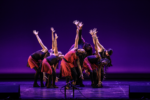
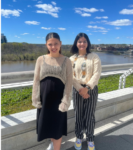






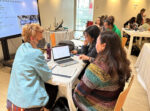


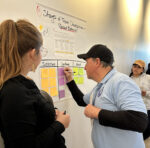




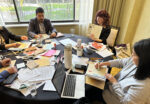
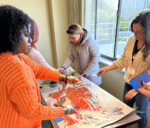

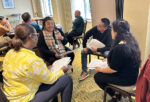


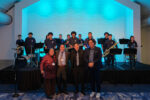
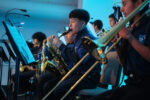
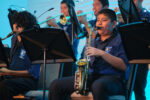

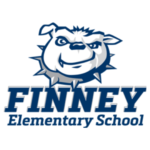 Finney Elementary is a K-6 grade school that serves 385 students. 84% of students receive free/reduced-price lunch, and 29% are English language learners. Finney’s team believes that the arts will engage their students, spark curiosity, and make them excited to be at school.
Finney Elementary is a K-6 grade school that serves 385 students. 84% of students receive free/reduced-price lunch, and 29% are English language learners. Finney’s team believes that the arts will engage their students, spark curiosity, and make them excited to be at school.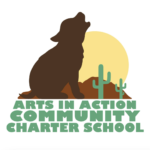 Arts in Action Elementary serves 377 students in grades TK-5, while their middle school serves 248 students in grades 6-8. 95% of students receive free/reduced-price lunch, and 34% are English language learners.
Arts in Action Elementary serves 377 students in grades TK-5, while their middle school serves 248 students in grades 6-8. 95% of students receive free/reduced-price lunch, and 34% are English language learners. Echo Valley Elementary is a K-6 grade school that serves 531 students. 100% of students receive free/reduced-price lunch, and 66% are English language learners. Echo Valley’s vision is to become the arts school in their community. Families are eager to become more involved, and the teachers and principal believe the arts will offer a greater access point into the school community. They are excited to expose their teachers to more art forms to use in their classrooms.
Echo Valley Elementary is a K-6 grade school that serves 531 students. 100% of students receive free/reduced-price lunch, and 66% are English language learners. Echo Valley’s vision is to become the arts school in their community. Families are eager to become more involved, and the teachers and principal believe the arts will offer a greater access point into the school community. They are excited to expose their teachers to more art forms to use in their classrooms.

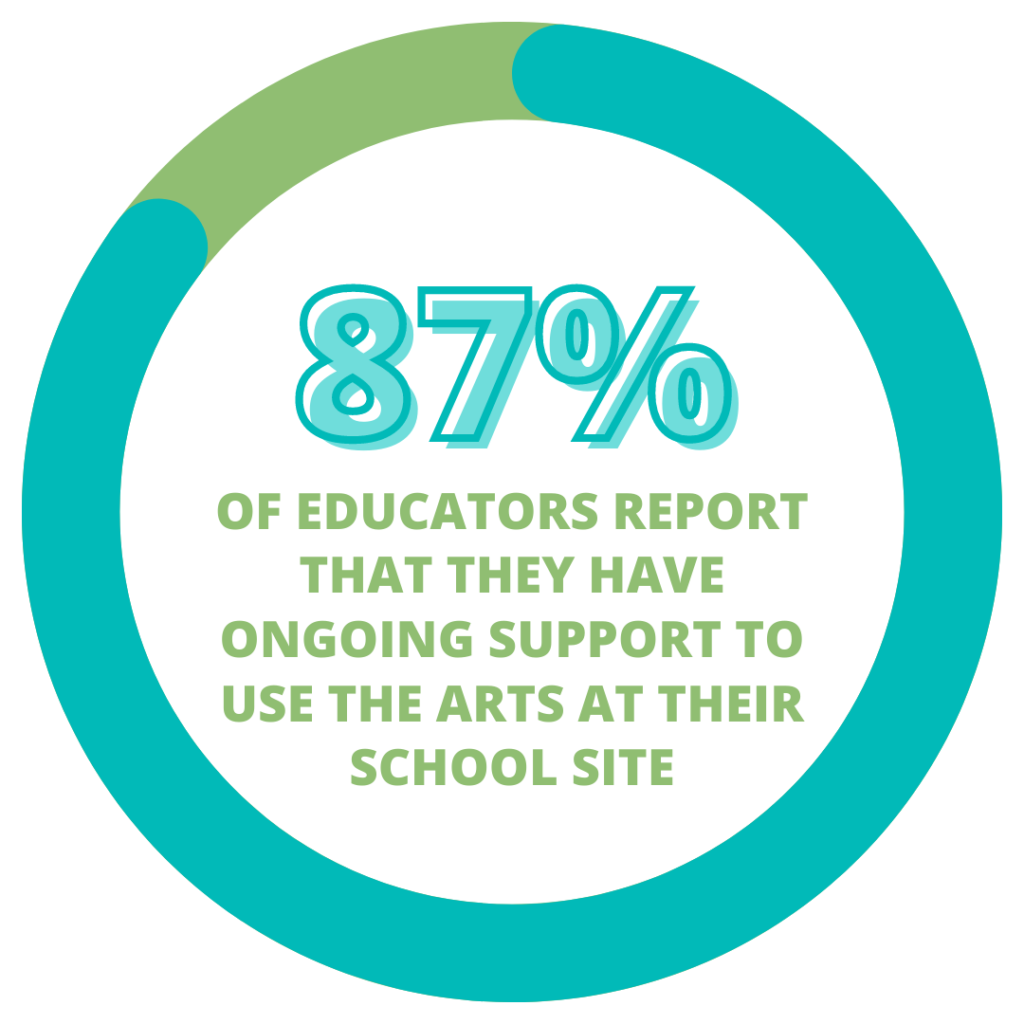
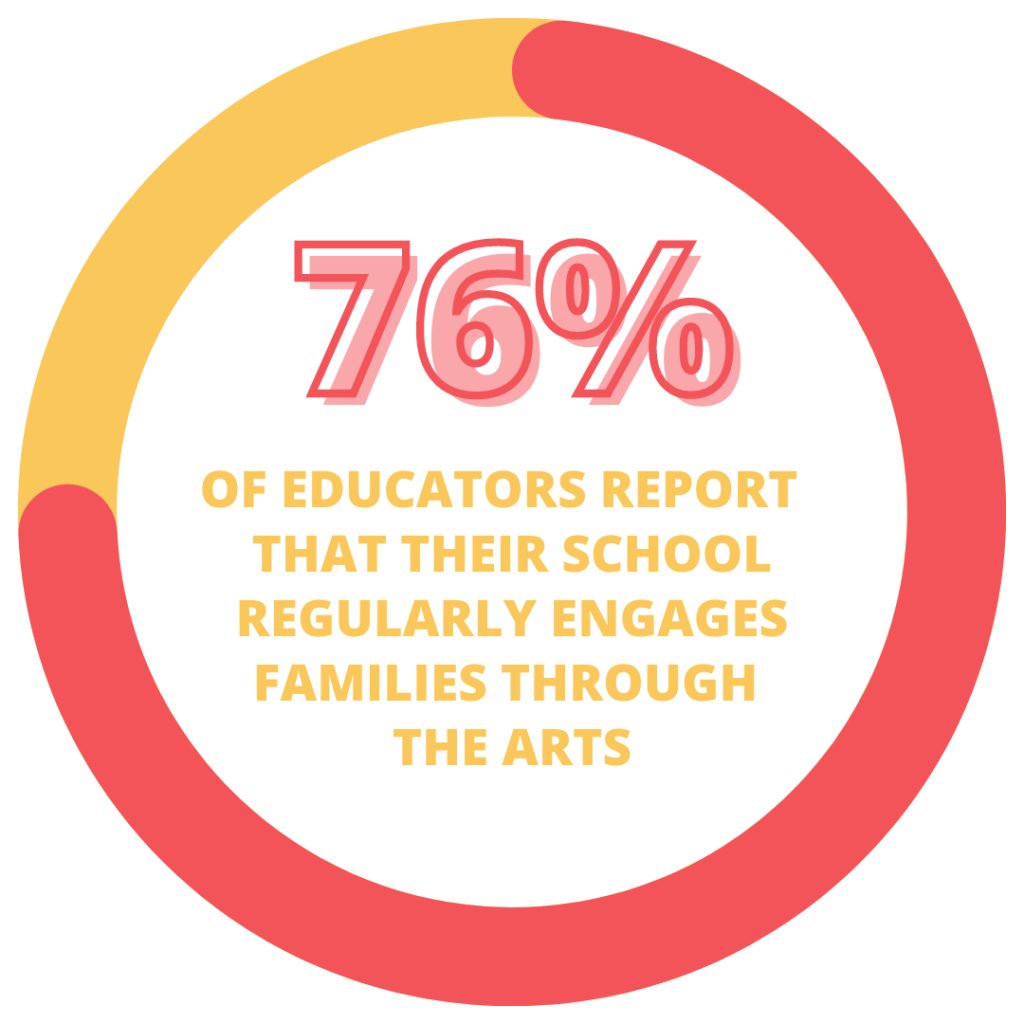
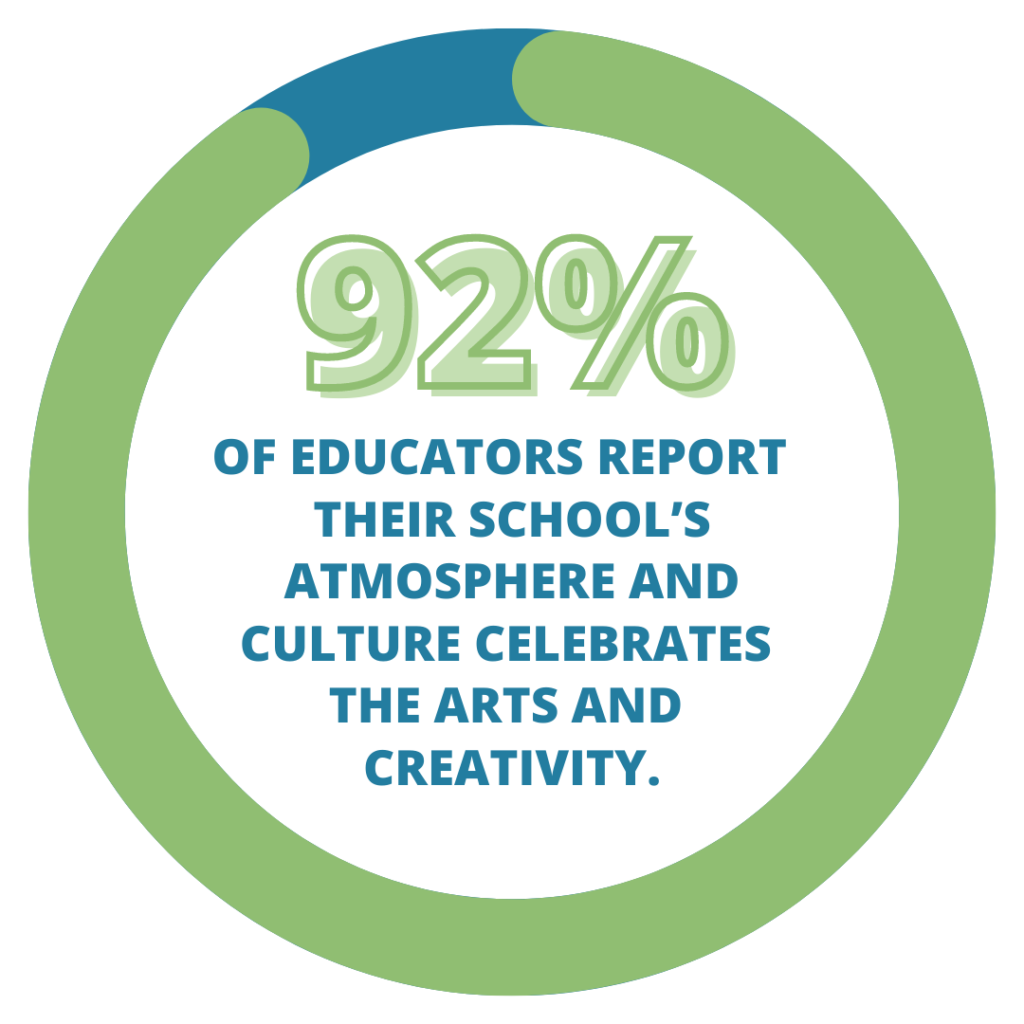




 About Naishian Rainflower Richards: Naishian Rainflower Richards is a member of the Western Shoshone tribe and a descendant of the Northern California tribes of the Hupa, Yurok, and Redwood Creek. She shares indigenous arts in the Hoopa community, previously serving as a Cultural Consultant for the
About Naishian Rainflower Richards: Naishian Rainflower Richards is a member of the Western Shoshone tribe and a descendant of the Northern California tribes of the Hupa, Yurok, and Redwood Creek. She shares indigenous arts in the Hoopa community, previously serving as a Cultural Consultant for the 
